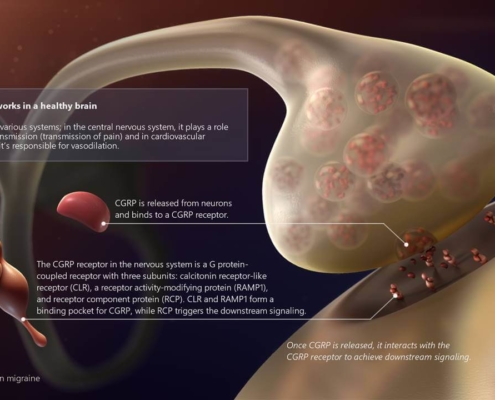Laying the groundwork for a multi-unit eLearning tool for medical training
eLearning tools are important for pharmaceutical and biotech companies to provide their employees with the foundational knowledge they need for carrying out their responsibilities. But if these tools are not developed with the specific needs of the company and its employees in mind, the result can be inefficient training, which is accompanied by significant long-term costs.
A modern eLearning tool needs to be designed for how people actually learn. We learn by doing, by practicing, by getting feedback, and also by making mistakes. We learn through experience.
An effective eLearning requires a clear story, engaging interactive features, and compelling visuals that are all uniquely crafted to the goals of the training program and the company’s objectives.
Today’s eLearning tools should look like the following examples:
Planning a curriculum to identify objectives and minimize long-term costs
To develop an effective, custom eLearning tool like those shown above, establishing a curriculum is an essential first step.
The exact costs of an eLearning require a clear delineation of the content covered. A curriculum is an initial, smaller project that aims to establish a content outline to serve as a basis for calculating the costs for the eLearning.
This helps reduce time and costs in the long run by identifying clear learning objectives and overall goals for the project at the outset rather than waiting for the project to be in full swing before answering these important questions. It also helps prevent ending up with an eLearning that doesn’t have clear instructional goals and doesn’t achieve the results you’re looking for.
In addition, this curriculum project gives your team a chance to get to know the lead medical advisors and management team at the agency before committing the substantial resources required for an entire eLearning project.
In short, a curriculum represents an initial investment whose return continues to grow for years after the eLearning is launched.
Collaborating with an agency to establish a curriculum
The costs involved cover the following collaborative process:
1. Internal research and review of materials provided to prepare a questionnaire for your team to identify any missing information and desired objectives.
2. Half-day workshop (online or on-site) with your content experts to clarify core goals, main topics, and specific information to be covered in the eLearning.
3. Development of a curriculum including a modular structure with a clear definition of the learning objectives and a content outline for each module.
4. Online presentation and discussion of the curriculum and content outlines with your content experts and incorporation of their feedback.
5. Delivery of updated curriculum (modular structure and content outlines) for offline review by your experts and incorporation of their additional feedback.
6. Delivery of final curriculum for approval, to serve as the basis for the scope of work for the eLearning as a whole.
This initial investment can represent the first step in collaborating with the agency who designed the curriculum. You will learn how the individual team members of the agency work. And by the end of the curriculum project, they should have gained your confidence in awarding the development of the entire eLearning project to the agency.








